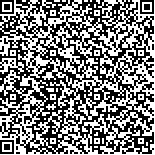下载中心
优秀审稿专家
优秀论文
相关链接
摘要

在卫星气溶胶反演中,如何确定研究区域的气溶胶模型直接影响目前大多数卫星遥感算法的气溶胶光学厚度反演精度.本文基于气溶胶自动观测网(AERONET)典型类型的动态气溶胶模型,提出了一种基于动态气溶胶模型的气溶胶光学厚度反演算法,并将其运用到PARASOL(Polarization and Anisotropy of Reflectance for Atmospheric Science coupled with Observations from Lidar)卫星的反演中.针对华北地区2012年的PARASOL卫星观测数据,应用动态气溶胶模型反演算法反演气溶胶光学厚度,并与地面观测站点进行对比验证,结果显示通过气溶胶模型选取与反演结果的迭代约束,在865 nm反演的气溶胶光学厚度与地基观测的相关程度(R2)达到0.71,均方根误差(RMSE)为0.15,与PARASOL气溶胶产品相比一定程度提高了反演结果的精度.
In the satellite aerosol retrieval scheme, determining the aerosol model directly affects the accuracy of most of the current aerosol optical depth retrieval algorithms. The dynamic aerosol models determined based on the extensive analysis of aerosol optical properties obtained from AErosol RObotic NETwork (AERONET) sun-photometer observations are introduced to a new aerosol retrieval algorithm to derive the Aerosol Optical Depth (AOD) using the PARASOL (Polarization and Anisotropy of Reflectance for Atmospheric Science coupled with Observations from LiDAR) multi-angular and polarimetric measurements. The rationale of our algorithm is to initially establish LUTs (Look Up Tables) using dynamic aerosol models in ten different AOD conditions: Model AOD∈[0.0, 0.1], [0.1, 0.2], [0.2, 0.3], [0.3, 0.5], [0.5, 0.8], [0.8, 1.0], [1.0, 1.2], [1.2, 1.5], [1.5, 1.8], and [1.8, 2.0]. The retrieved AOD and selected aerosol model must meet two requirements successively: (1) combination of the retrieved AOD and Model that leads to the best mimic of the TOA (Top Of Atmosphere) polarized reflectance measurements; (2) the retrieved AOD in the Model AOD intervals, otherwise the retrieved AOD and the Model will be rejected. The accuracy of this algorithm is guaranteed by the iterative constraint between the aerosol model selection and the retrieved AOD, as well as the simultaneous use of two bands (670 nm and 865 nm), multi-angular, and polarimetric measurements to constrain the retrievals. By applying this algorithm to a whole year of the 2012 PARASOL measurements in the North China Plain, typical cases, such as clean and polluted days, were analyzed to test this algorithm. The validation of the retrieved PARASOL AOD with those of AERONET in Beijing showed reasonable agreement (matched pairs N=101, square correlation coefficient R2=0.71, root mean square error RMSE=0.15, and 91% of all the samples lie within 0.2 AOD thresholds). To validate the regional suitability of this algorithm, four temporary ground-based CE318 sites (Tianjin, Tiangang, Tanggu, and Qichang) in North China as a part of our Jing-Jin-Tang aerosol experiment in March 2012 were also adopted to validate. Good agreements are also shown in these four sites. In dynamic aerosol model retrieval algorithm, the aerosol model is associated with the AOD magnitude by prior knowledge, constraining the retrieved AOD and selected aerosol model simultaneously.

